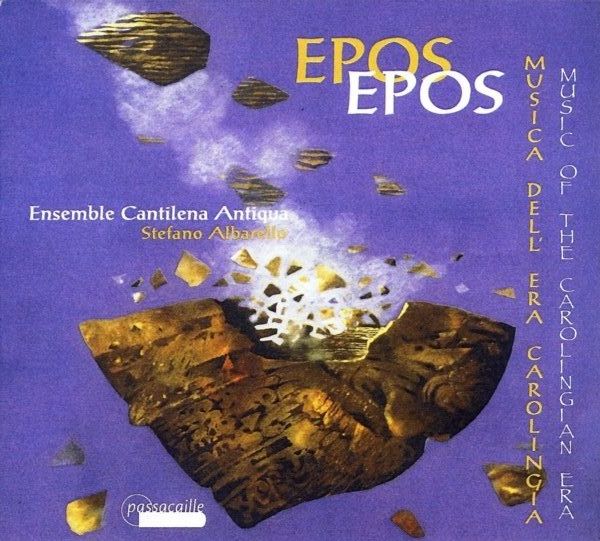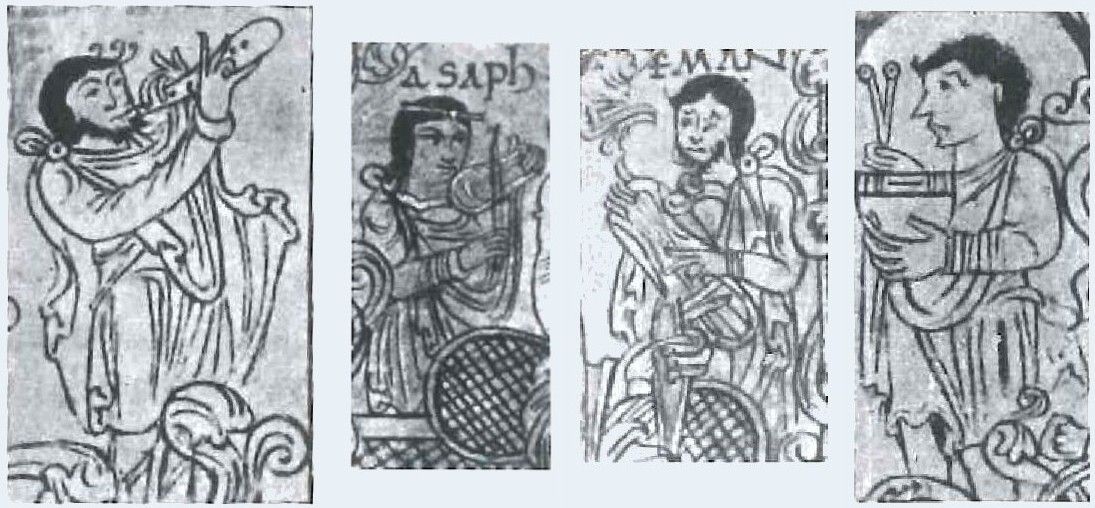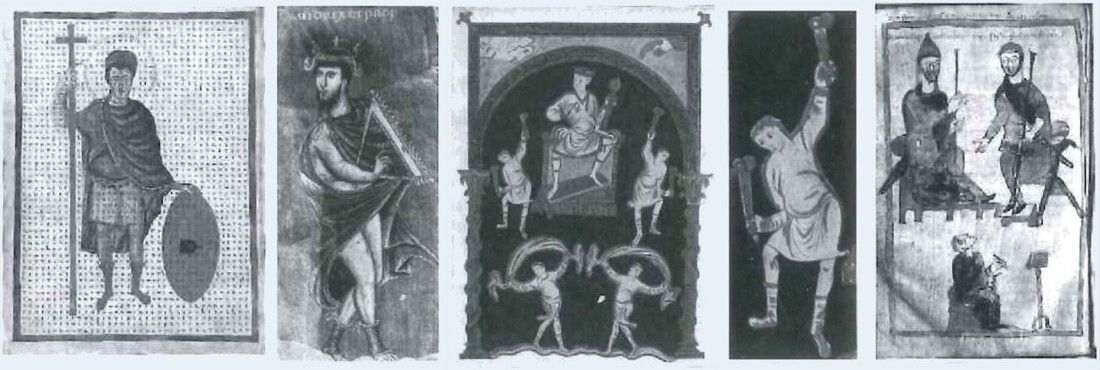Epos. Musica dell'era carolingia
Cantilena Antiqua

medieval.org
cantilenantiqua.com
Passacaille PAS 974
2011
grabación: Volmare Are Studio, Bologna
marzo de 2009
Anicius Manlius Torquatus Severinus Boethius
De Philosophia consolatione
01 - Bella bis quinis [6:16]
Godescalcus
de Orbais · Paris Lat. 1154
02 - Ut quid iubes pusiole [7:04]
Publius Vergilius Maro
03 - Aeneis Liber II [8:20]
v. 42-50; v. 274-279; 281-287
anonimus, Paris Lat. 1154
04 - Planctus Karoli [6:52]
05 - Hug dulce nomen [7:15]
Anicius Manlius Torquatus Severinus Boethius
De Philosophia consolatione
06 - O stelliferi conditor orbis [9:39]
Quintus Horatius
Flaccus
Epistula I, 4
07 - Albi ne doleas [3:23]
Publius Vergilius Maro
08 - Aeneis Liber IV [8:32]
v. 424-437; v. 651-658
Quintus Horatius
Flaccus
carmina Liber IV ode XI
09 - Est mihi nonum [3:49]
Angilbertus · Paris Lat. 1154
10 - Aurora cum primo mane [8:50]
musica: anonimus

Ensemble Cantilena Antiqua
Stefano Albarello
Stefano Albarello: cantus, lyra, cithara
Paolo Faldi: tibiae
Gianfranco Russo: fidula
Marco Muzzati: tintinnabula, psalterium, cimbala

The Carolingian era marks an important moment in the history of early
medieval Latin lyrical poetry and medieval music. The Carolingian
revival was fundamental to the rehabilitation of the classical
tradition, which had been neglected during a barbarous period, as it
combined elements from the classical and patristic traditions to lay
the foundations of a new culture. This rediscovery of Latin classicism
by way of the Hellenic culture blended major contributions from the
Byzantine and Oriental cultures with those of the Anglo-Celtic world,
from which came notably Alcuin of York, who reorganised the Church; but
it also integrated important contributions of intellectuals from the
Mediterrenean area such as Teodulf, Paulinus of Aquileia and the
Lombard Paul the Deacon.
The results of this revival are apparently all represented in the
manuscript Lat. 1154, now in Paris, which can be considered a
testamentary compilation of the Carolingian culture. It was written
around the end of the ninth and the beginning of the tenth century. In
this manuscript are preserved, among many others, a series of
compositions which report historical facts about this dynasty,
represent an important epic and elegiac heritage from before the year
one thousand. We found it quite extraordinary that some of these poems
are linked to a musical score (typical Aquitanian neumes). Even if it
is only a small one, this collection of cantos represents an important
'repertoire' from that time; it includes moral, epic and convivial
writings even by classical authors such as Horace, Virgil and Boethius.
It is hardly surprising that the Carolingian dynasty should have
furthered the revaluation of the latter philosopher and his work, above
all the 'De philosophiae consolatione', from which the verses
of two of the compositions recorded here are drawn.
A truly remarkable event has been the discovery in a manuscript of the
Biblioteca Laurenziana in Florence of various fragments of the Aeneid
linked to musical notation; they are precious evidence of the
practice of singing the verses of this monumental work.
With regard to the contemporary poets, we come across Gottschalk of
Orbais, a theologian and poet born in Saxony. He entered the monastery
of Fulda, under abbot Rabanus Maurus, who had been educated at the
school of Alcuin. However, disgraced after being accused of heresy,
Gottschalk was expelled from the monastery and exiled. In in his song
(Ut quid iubes pustole) he clearly expresses his deep distress about
the exile, with perhaps a dedication to his friend Walfridus Strabo.
Another writer in this anthology is Angilbert, of Frankish stock, who
was educated at Charlemagre's court, where he met Alcuin and Paulinus
of Aquileia. He proved to be an excellent diplomat, and was sent by
Charlemagne as an emissary to the Pope.
He had two children with Bertha, the daughter of Charlemagne, who
protected this illegitimate relationship. Perhaps because of Alcuin's
insistent disapproval, Angilbert eventually renounced worldly life and
went on to become a Lay Abbot at Saint-Riquier. While at Charlemagne's
court, Angilbert was so successful as a poet that he was given the
nickname of Homer. The poem The Battle of Fontenoy is
attributed to him (in one verse he names himself as the author), and
some also assign the 'Planctus de obitu Karoli' (Lament on the
Death of Charlemagne) to him , but this last is controversial, as the
author may also be an anonymous Italian poet, perhaps from Bobbio,
given that one of the last stanzas mentions the deeply venerated Saint
Columban, who had founded an important monastery, precisely in Bobbio.
It also has to be stressed that the Planctus Karoli of Lat.
1154 follows an arrangement of verses and melody that differs from
that of the other poems with a hymnic musical structure, and in which
the A melody is dedicated to the lines of the first two
stanzas, and the B melody, to those of the following stanzas.
As to the lines which in other sources always alternate with the
inserted line 'heu mihi misero', they alternate in our
manuscript with the A melody rendering the line 'heu dolens
plango', which generates a more complex and fuller structure.
Moreover, compared to the other sources, the original text is reduced
by many lines.
In general it must be said that these are not purely musical
manuscripts, the notation clearly being a later addition to the
literary texts. This gives rise to questions about the normal practice
and performance possibilities of these poems (maybe simple exercises in
style?). The notation is mostly (in our opinion) an attempt at
diastematic writing in Ms. Lat. 1154, while the Aeneid
still follows the linear adiastematic tradition. We believe that this
illustrates the stage of experimentation and development musical
writing was going through at the time. We therefore considered it to be
possible to reinterpret these melodies, providing we followed a
methodology in accordance with the rules of the time. Even the
instrumentation is dictated by the organological and archeological
sources. As a matter of priority it was necessary to reconstruct the
lyra on the basis of the models found in Germany and England or of the
cythara of Roman tradition. These are all instruments referred to by
the eminent music theorist of the time, Hucbald, and also mentioned in
contemporary songs (such as 'lam dulcis amica venito' and 'Aurea
personet lyra').
2009 © Stefano Albarello
Translation: Chris Cartwrigt




